South African Amaryllis: Care Guide for Flower
South African Amaryllis, also known as Southern Hemisphere Amaryllis, is a breathtaking flowering plant known for its large, trumpet-shaped blooms and vibrant colors. Unlike traditional Amaryllis varieties that bloom in winter, South African Amaryllis typically flowers in early spring or even late summer, making them a unique addition to any garden or indoor space. Their striking hues, ranging from deep reds and bright oranges to soft pinks and whites, create a stunning visual display.
These flowers thrive in warm climates but can also be grown in containers, allowing gardeners to enjoy their beauty indoors. Their resilience and adaptability make them easy to care for, requiring minimal maintenance once established. With proper sunlight, well-draining soil, and occasional feeding, South African Amaryllis rewards gardeners with abundant, long-lasting blooms. Whether planted in garden beds, decorative pots, or used in floral arrangements, these flowers bring elegance and charm to any setting. Our gardening blog is a perfect place to find all the information you need!
Why Choose South African Amaryllis for Your Garden or Home?
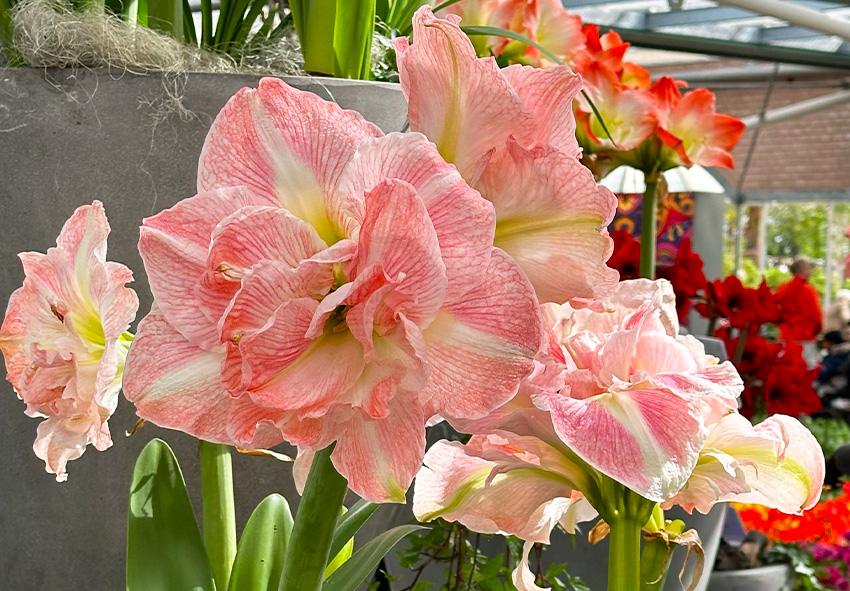
South African Amaryllis is a fantastic choice for both outdoor gardens and indoor décor due to its stunning beauty and unique growth cycle. One of the primary advantages of this variety is its early blooming season, which often starts in spring, providing vibrant flowers before other Amaryllis varieties even begin to grow. This makes them an excellent option for gardeners who want to enjoy bright and colorful flowers at different times of the year.
In addition to their early flowering, South African Amaryllis come in a wide range of colors, from fiery reds and oranges to soft pastels and pure whites. Their large, trumpet-shaped blooms make a striking statement in garden beds, potted arrangements, or floral displays. These flowers are also incredibly adaptable, thriving in warm outdoor climates and performing well indoors when grown in containers.
Furthermore, South African Amaryllis are relatively low-maintenance, requiring only well-draining soil, adequate sunlight, and occasional watering. They can be left in the ground year-round in warmer regions, while those in colder climates can easily store the bulbs indoors during dormancy and replant them in the next growing season. With their long-lasting blooms and ease of care, South African Amaryllis is a rewarding choice for any plant enthusiast.
The Most Popular South African Amaryllis Varieties and Their Characteristics
South African Amaryllis features a variety of striking cultivars, each offering unique colors, bloom sizes, and growth habits. One of the most sought-after varieties is Amaryllis Belladonna, commonly known as the “Naked Lady” due to its leafless flowering stalks. This variety produces delicate pink blooms with a sweet fragrance, making it a favorite in warm-climate gardens.
For those looking for more intense colors, Amaryllis Red Lion is an excellent choice. With its bold, deep red petals and large flowers, it makes a dramatic statement in garden beds and potted arrangements. Another eye-catching variety is Amaryllis Apple Blossom, which features soft pink and white petals with subtle green centers, giving it an elegant and romantic appearance.
South African Amaryllis also includes more exotic varieties, such as Amaryllis Chico, known for its unusual, spidery-shaped petals in shades of burgundy and green. These unique cultivars add a distinctive charm to floral displays and landscape designs. Whether you prefer traditional, richly colored blooms or rare and exotic forms, South African Amaryllis provides a wide selection of stunning flowers that thrive with minimal care. Their diverse beauty ensures they remain a standout addition to any indoor or outdoor setting.
Apologies for the misunderstanding. Below are the lists with detailed text for each of the subheads you requested:
Classic Red South African Amaryllis
Here are some of the most popular deep red varieties of South African Amaryllis:
- Dynamite: this variety features a vibrant deep red color, and its compact size makes it ideal for smaller spaces or containers. The large, trumpet-shaped blooms are perfect for dramatic displays.
- Fire Dancer: known for its velvety, bold red petals, Fire Dancer offers a rich, eye-catching color. It adds a warm, inviting feel to gardens and floral arrangements, especially when used as cut flowers.
Both varieties are known for their early bloom cycle, which means they will brighten up your garden before many other flowers have bloomed. Red Amaryllis varieties, like these, thrive in well-draining soil, plenty of sunlight, and consistent care. They also tend to be quite hardy, making them a great choice for both indoor and outdoor gardening.
Elegant White and Cream South African Amaryllis
If you’re looking for elegance and sophistication, these white and cream South African Amaryllis varieties will definitely stand out:
- Alfresco: offers pure, crisp white petals with a soft green throat, making it an ideal choice for elegant garden displays or floral arrangements. Its gentle beauty fits perfectly in both modern and traditional settings.
- Sonatini Alaska: this variety features large, greenish white blooms that add a touch of sophistication to any floral display. The large, delicate petals have a smooth texture, and the flowers can brighten up any indoor or outdoor setting.
White and cream varieties are perfect for creating serene and peaceful landscapes, making them ideal for weddings, special occasions, or minimalist garden designs. These Amaryllis require full sunlight and well-drained soil to thrive, which will help them produce their stunning blooms year after year.
Bi-Colored and Striped South African Amaryllis
For a striking and unique display, these bi-colored and striped South African Amaryllis varieties are sure to stand out:
- Cocktail: a beautiful red-and-white striped variety, Cocktail brings a playful yet vibrant energy to gardens or floral arrangements. Its bright petals with bold stripes create an eye-catching contrast that makes it a favorite for festive seasons.
- Razzmatazz: this variety showcases large, double-layered flowers with a striking red-and-white blend. Its bold coloration makes it a statement piece in any garden or floral arrangement, perfect for adding depth and visual interest.
Bi-colored Amaryllis varieties are particularly good for creating contrast and bringing in a bold, dramatic feel to floral arrangements. These varieties thrive best in sunny locations with well-draining soil, so they can grow and bloom to their full potential. Their unique coloration makes them perfect for adding something special to your garden.
Exotic and Rare South African Amaryllis
If you’re seeking something truly unique, these exotic and rare South African Amaryllis varieties will definitely impress:
- Mystica: its elongated petals features exotic greenish-yellow petals streaked with burgundy stripes. Its distinctive appearance makes it a showstopper in any garden.
- First Love: boasts delicate pink petals that fade to a soft white gradient effect. This rare variety offers an ethereal, charming look that is perfect for gardens or as a unique gift.
Exotic varieties like these are ideal for those who want a more unusual and rare floral display. While they may require a little more attention and care, the results are certainly worth it. These varieties thrive in warm, well-lit conditions, and should be planted in well-draining soil. Their stunning blooms make them the perfect choice for garden enthusiasts looking for something different.
How to Plant and Grow South African Amaryllis Successfully
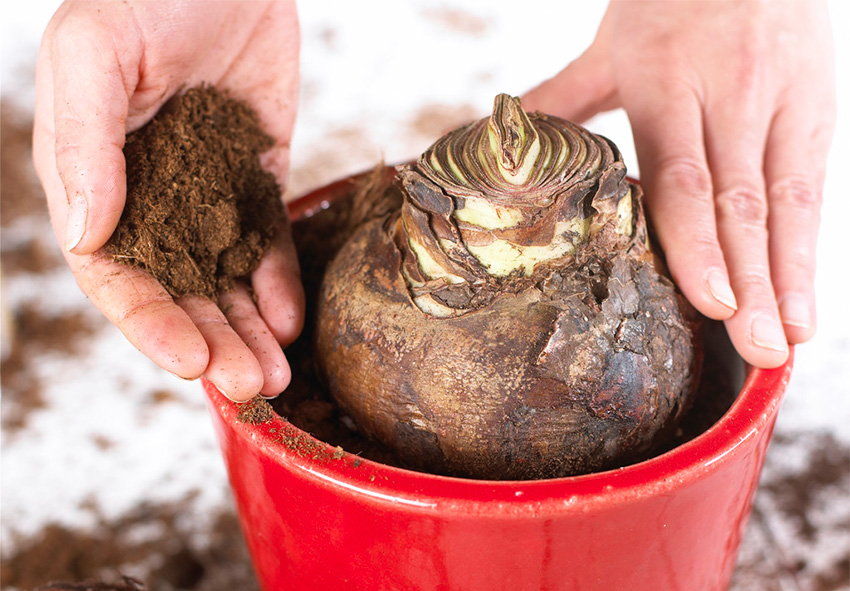
Planting and growing South African Amaryllis requires careful attention to detail to ensure healthy and vibrant blooms. These bulbs are known for their stunning trumpet-shaped flowers and can thrive in a variety of settings when given the right care. To successfully grow South African Amaryllis, begin by selecting the best quality bulbs. Ensure that they are large, firm, and free of damage or mold. The soil should be well-draining and rich in organic matter, providing the proper nutrients for the bulbs to grow. It’s also important to choose the right planting location, ideally in full sun or partial shade, depending on your local climate.
Once planted, water the bulbs lightly, keeping the soil moist but not soggy. Overwatering can lead to rot, so be cautious. After the leaves and stems begin to emerge, reduce watering frequency. Providing the right growing conditions is also crucial—mulching around the bulbs will help retain moisture and regulate soil temperature. It’s essential to protect young shoots from extreme cold or wind, especially in the early stages of growth. With proper South African Amaryllis bulb care, these flowers will reward you with stunning blooms in vibrant colors, perfect for adding beauty to any garden or home.
Step-by-Step Guide to Planting South African Amaryllis
Planting South African Amaryllis is straightforward with the right approach. Choose healthy, firm bulbs and ensure proper soil and location. Plant at the correct depth, space bulbs appropriately, and water carefully. Protect growing shoots and provide optimal conditions, including mulch for moisture retention and temperature regulation.
Step 1: Choosing Quality South African Amaryllis Bulbs
When choosing South African Amaryllis bulbs, look for those that are large and firm with no visible mold or damage. Bulbs that are shriveled, soft, or show signs of mold may struggle to bloom or fail altogether. The best bulbs are plump and free from blemishes, ensuring strong and healthy growth. When purchasing bulbs, inspect them carefully to confirm they are free from rot, which can easily spread and prevent the bulb from thriving. Healthy bulbs are essential for getting the most out of your Amaryllis, as weak or damaged bulbs may not produce the stunning flowers these plants are known for. Additionally, avoid bulbs with any signs of pests or decay, as these could lead to problems during growth. By investing in quality bulbs, you’ll be giving your South African Amaryllis the best start for robust blooming and a long-lasting garden display.
Step 2: Choosing the Right Soil and Location
South African Amaryllis requires well-draining soil that is rich in organic matter to thrive. The soil should have a slightly acidic to neutral pH of around 6.0-6.5, which supports healthy root development. Avoid heavy, clayey soils that can hold water and cause bulb rot. If your soil lacks organic matter, amend it with compost or other organic amendments to improve its structure and nutrient content. The location for planting should receive ample sunlight, ideally a full-sun or partial-shade spot depending on the climate in your area. In warmer regions, some afternoon shade can help prevent overheating, while in cooler climates, more sun is beneficial. Amaryllis also grows well in containers if you have limited garden space—just be sure to choose a pot with good drainage. Whether planted in the ground or in containers, ensuring proper soil and a favorable location will help your South African Amaryllis thrive and produce stunning flowers.
Step 3: Proper Planting Depth and Spacing
When planting South African Amaryllis, it’s essential to set the bulbs at the right depth and space them appropriately. Plant the bulbs with the top third above the soil line, ensuring that the soil around the bulb is firm but not packed too tightly. This technique helps prevent the bulb from rotting while allowing for optimal growth. Space the bulbs 8 to 10 inches apart, which gives them enough room for proper root development and airflow. Crowded bulbs may compete for nutrients, space, and light, which could result in weaker growth and fewer blooms. Ensuring adequate space between each bulb also promotes good air circulation, reducing the risk of fungal diseases. Whether you’re planting in rows or scattered groups, giving each bulb enough room will encourage strong, healthy plants that produce vibrant flowers. If planting in containers, ensure that the pot is large enough to accommodate proper spacing between bulbs.
Step 4: Watering After Planting
After planting South African Amaryllis, it’s important to water the bulbs carefully. Initially, water lightly to keep the soil evenly moist but avoid making it soggy, as excessive moisture can lead to bulb rot. Amaryllis bulbs are relatively drought-tolerant, but they still require moisture for root establishment and growth. Once the shoots start emerging from the soil, increase the watering frequency to keep the soil consistently moist. However, be cautious not to overwater—this can cause the bulbs to rot. The key is to maintain a balance, ensuring that the soil stays moist enough for the bulbs to establish but without creating waterlogged conditions. As the plant grows, you can reduce watering slightly. Once the plant has fully developed and flowers begin to emerge, ensure the soil remains consistently moist, but still avoid overwatering. Proper watering is essential for keeping your South African Amaryllis healthy and thriving.
Step 5: Providing the Right Growing Conditions
For your South African Amaryllis to thrive, it’s crucial to provide the right growing conditions. Protect young shoots from strong winds and extreme cold, especially during the early stages of growth. Amaryllis can be vulnerable to frost, so if you’re planting in an area with unpredictable weather, consider using row covers or providing some shelter to shield the shoots. Additionally, mulching around the base of the plant is highly beneficial, as it helps retain moisture in the soil and regulates the temperature. Mulch can prevent the soil from drying out too quickly and protect the roots during fluctuating temperatures. It also keeps the soil at a consistent temperature, which is ideal for promoting healthy root growth. Keep an eye on the plant’s growth, making sure to remove any damaged or unhealthy leaves and stems. With the right protection, your South African Amaryllis will bloom beautifully and thrive for years to come.
Essential South African Amaryllis Care Tips for Healthy Growth
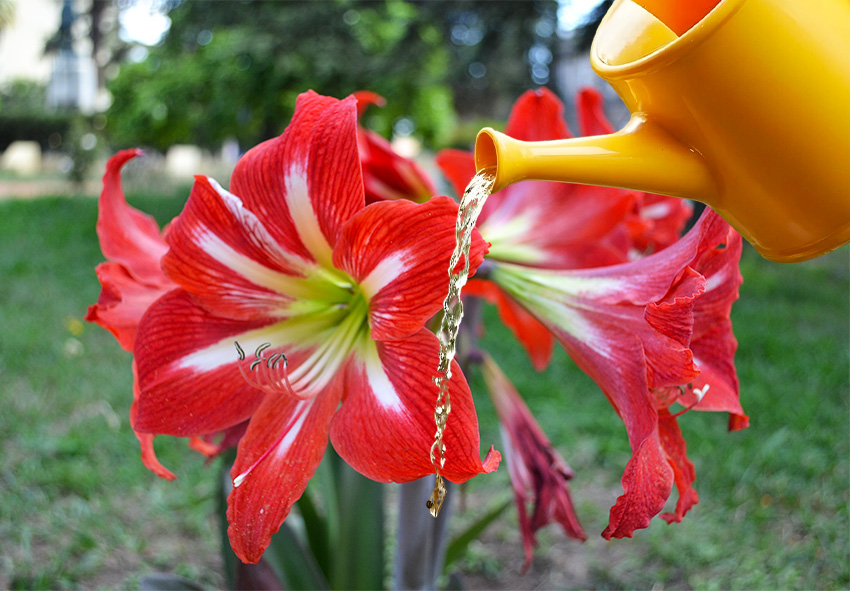
To ensure your South African Amaryllis grows healthily and blooms beautifully, it’s essential to follow proper care guidelines, covering aspects like light, water, temperature, and feeding. These plants thrive with consistent care and attention, providing an elegant touch to your garden or home. First and foremost, water the plant deeply but infrequently, ensuring the soil dries out between waterings to prevent root rot. Amaryllis bulbs dislike sitting in waterlogged soil, so good drainage is crucial.
Feeding is equally important—use a balanced fertilizer to nourish the plant and promote healthy growth. During the growing season, feed your Amaryllis every two weeks, but stop fertilizing once the buds appear to encourage blooming. These flowers flourish in full sun but can tolerate partial shade, especially in hotter climates. Be mindful of the temperature, as South African Amaryllis thrives in moderate warmth, ideally between 18-24°C (65-75°F). Temperatures outside this range may stress the plant and hinder its growth.
Lastly, support your Amaryllis to keep tall stems upright and prevent bending. You can use stakes or plant supports, especially for taller varieties. Remove spent flowers (deadhead) regularly to extend the blooming period and encourage more blossoms. With the right care, your Amaryllis will reward you with vibrant blooms year after year.
How to Care for South African Amaryllis After Planting
It’s important to know how to care for South African Amaryllis in the garden just as to learn how to care for South African Amaryllis indoors. After planting South African Amaryllis, consistent care is necessary to maintain its health and encourage blooming. Ensure proper watering, use a balanced fertilizer, and place the plant in a suitable location with enough light. Support taller stems and regularly deadhead spent flowers to encourage more blooms throughout the season.
Step 1: Watering South African Amaryllis the Right Way
Proper watering is crucial for the health and blooming success of South African Amaryllis. Water deeply once a week, making sure the soil is thoroughly moistened. However, it’s important to let the soil dry out between waterings, as overwatering can lead to bulb rot and other issues. This allows the roots to breathe and prevents standing water around the bulb. A well-draining pot or garden bed will further help maintain the right moisture levels. When watering, focus on the surrounding soil rather than watering the bulb directly to avoid fungal diseases, which are common if water sits on the bulb or leaves. Ensuring the plant’s roots get the moisture they need without over-soaking the soil is essential for keeping your South African Amaryllis healthy and promoting strong, vibrant blooms. During the dormant period, water less frequently, allowing the bulb to rest. Over time, you’ll learn the specific moisture needs of your Amaryllis based on your local climate and soil conditions, ensuring it remains well-hydrated without being too wet.
Step 2: Fertilizing for Strong Growth
To support the healthy growth of your South African Amaryllis, regular feeding with a balanced liquid fertilizer is key. Use a 10-10-10 fertilizer, which contains equal parts nitrogen, phosphorus, and potassium, every two weeks throughout the growing season. This balanced nutrition ensures your plant receives the necessary elements for strong roots, healthy foliage, and vibrant blooms. However, once buds start appearing, stop fertilizing to encourage the plant to focus its energy on blooming rather than producing more foliage. Fertilizing too late in the growing season may delay the blooming process and affect the quality of the flowers. If you’re growing Amaryllis in containers, consider switching to a slow-release fertilizer, which can provide consistent nourishment over time without the risk of overfeeding. By following a regular fertilizing schedule, you’ll help your South African Amaryllis develop strong stems and produce large, beautiful blooms. In general, always follow the fertilizer manufacturer’s guidelines to avoid overfeeding, which can harm the plant.
Step 3: Providing Proper Light and Temperature
South African Amaryllis thrives in full sun, which promotes strong growth and abundant blooms. Ideally, place your plant in a location where it receives at least 6 hours of sunlight per day. This ensures it gets enough energy to fuel its blooming process. If you’re growing Amaryllis in a particularly hot climate, some afternoon shade can help prevent the plant from overheating. In cooler climates, full sunlight is perfect for healthy, vigorous growth. Temperature is also crucial for your Amaryllis’ well-being. These plants prefer moderate warmth and perform best when temperatures range from 18-24°C (65-75°F). Too much heat can cause the plant to go dormant prematurely or prevent it from blooming properly, while low temperatures can damage the plant and stunt its growth. If you’re growing Amaryllis indoors, make sure the room is warm and well-lit. Outdoor plants may need protection from frost or extreme cold temperatures. Maintaining ideal light and temperature conditions will encourage strong growth and vibrant flowering.
Step 4: Supporting Tall Stems and Encouraging Blooms
South African Amaryllis, particularly taller varieties, may require support to keep their stems upright and prevent them from bending or breaking under the weight of the blooms. Use plant stakes, small trellises, or other plant supports to help guide the stems as they grow. Be sure to install these supports early in the growth process to avoid damaging the stems later. This will also help the plant maintain its shape and ensure its flowers stand tall. Additionally, deadheading spent flowers is essential for encouraging prolonged blooming. By removing faded blooms, you allow the plant to direct energy into producing new flowers rather than expending resources on old, dying ones. Deadheading can be done with clean, sharp scissors or pruning shears to avoid introducing disease to the plant. After blooming, allow the leaves to remain intact to help the plant store energy in the bulb for the next season’s growth. With the right support and care, your South African Amaryllis will continue to thrive and produce stunning flowers.
How to Encourage Your South African Amaryllis to Bloom Again
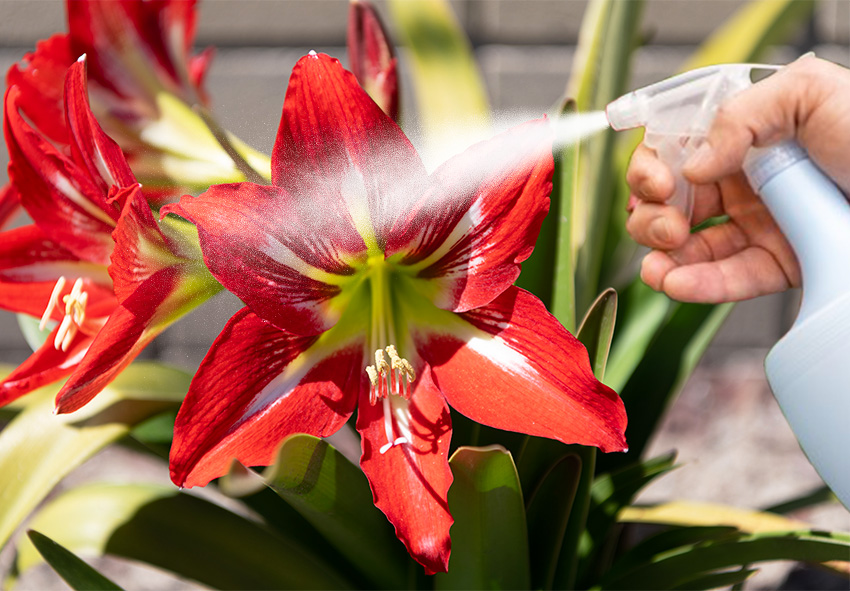
South African Amaryllis may not rebloom due to several factors, including improper care or environmental conditions. Common reasons for the lack of reblooming include a lack of proper rest after flowering, insufficient sunlight, and not enough nutrients being stored in the bulb. For the plant to bloom again, it must go through a period of dormancy. This allows the bulb to rest and rejuvenate its energy reserves for the next flowering cycle. Additionally, neglecting proper deadheading, fertilizing, or watering routines can impact the plant’s ability to produce flowers in the future.
To improve flowering, it’s essential to follow the correct post-bloom care routine, including cutting back the spent flower stalks and allowing the leaves to remain intact. The leaves are necessary for photosynthesis, which helps the bulb build energy for the next season. After flowering, ensure the plant goes through its dormancy phase, followed by reawakening it in the proper conditions. With a few essential steps, your South African Amaryllis can bloom beautifully year after year, rewarding you with its vibrant flowers. Let’s explore how to encourage your Amaryllis to rebloom successfully.
Step-by-Step Guide to Ensuring Reblooming
Encouraging your South African Amaryllis to rebloom requires proper care and timing. First, deadhead the spent flowers and allow the bulb to store energy. Then, induce dormancy by stopping watering, followed by storing the bulb in a cool place. Finally, restart growth in a warm, bright location for the next bloom cycle.
Step 1: Post-Bloom Care and Deadheading
After your South African Amaryllis has finished blooming, it’s essential to cut back the flower stalks, but leave the leaves intact. The leaves are vital for the plant to continue photosynthesis and store energy for next season’s growth. Deadheading the flower stalks helps prevent the plant from wasting energy on old blooms, allowing it to focus its resources on bulb development.
Even though the flowers have faded, keep watering the plant and continue to fertilize it regularly to promote healthy leaf growth. By doing so, you encourage the bulb to absorb nutrients and strengthen its reserves, which will be used to support future blooms. During this period, avoid cutting back the leaves too early, as they are working hard to fuel the bulb for its next bloom cycle. Keep the plant in a bright spot, ideally where it receives indirect light, and continue maintaining proper watering routines. This stage of post-bloom care is critical for ensuring the plant is ready for its next bloom cycle.
Step 2: Inducing Dormancy for Future Blooms
To allow your South African Amaryllis to rebloom in the next season, it must go through a period of dormancy. Start by stopping all watering once the leaves begin to yellow and wither naturally. This dry period signals the plant to rest and recover. When the leaves have completely died back, carefully remove the bulb from the pot or garden bed. Store the bulb in a cool, dry, and dark location for 8-10 weeks. During this time, the bulb will enter dormancy, conserving energy for the next blooming cycle.
A cool, well-ventilated space is ideal, as excessive humidity can lead to bulb rot. Avoid watering the bulb while it’s dormant, as this can interfere with the natural resting phase. Be sure to monitor the storage conditions and ensure the bulb isn’t exposed to frost or extreme temperatures, which can damage the bulb and hinder reblooming. After dormancy, your Amaryllis will be ready to restart its growth cycle.
Step 3: Restarting Growth for the Next Bloom Cycle
Once the dormancy period is complete, it’s time to bring your South African Amaryllis back to life. Start by placing the bulb in a warm, bright location where it can receive plenty of indirect sunlight. Gradually resume watering, beginning with light moisture to encourage the bulb’s growth. Overwatering at this stage can damage the bulb, so it’s important to water sparingly at first. As the bulb begins to show signs of new growth, such as small shoots or roots, you can increase the watering frequency.
Within 3-4 weeks, you should see new growth emerging from the bulb, signaling that the plant is ready to bloom again. During this period, continue to provide the plant with proper care by maintaining consistent watering, occasional fertilization, and protecting it from extreme temperatures. After a few weeks of care, your South African Amaryllis will be back on track for its next beautiful blooming cycle, offering stunning flowers once again.
Common Problems with South African Amaryllis and How to Fix Them
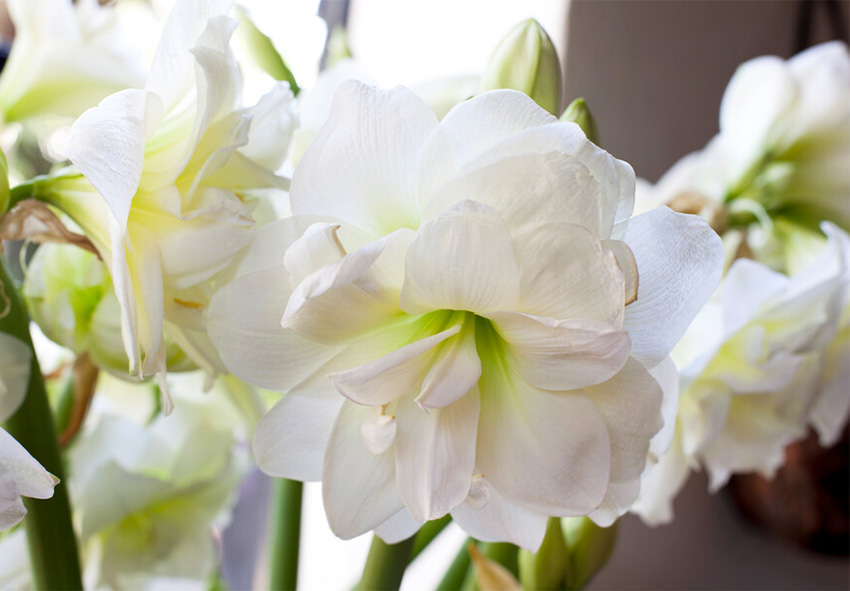
South African Amaryllis, while stunning, can encounter a range of problems that hinder their growth and blooming potential. Issues such as weak or no blooms, yellowing leaves, rotting bulbs, and pests can arise if the plant’s needs aren’t met properly. These problems often stem from improper care, environmental factors, or pests and diseases. The good news is that most of these issues can be addressed with simple adjustments and proper attention to care routines.
Understanding the root causes of these problems—such as inadequate dormancy, overwatering, or poor air circulation—is the first step to keeping your South African Amaryllis healthy. With a little knowledge and care, you can keep your plant thriving year after year, ensuring it continues to produce vibrant blooms. Let’s dive into some common problems and how to troubleshoot them effectively to maintain a healthy Amaryllis plant.
Troubleshooting Guide
Troubleshooting common issues with South African Amaryllis requires addressing specific causes such as lack of dormancy, overwatering, poor drainage, or pest infestations. With proper care and timely action, you can resolve these problems and keep your plant healthy, ensuring vibrant blooms and strong growth for seasons to come.
Issue 1: Weak or No Blooms
Weak or no blooms can be a frustrating problem with South African Amaryllis. This issue often arises from two main causes: improper dormancy or insufficient nutrients. If the plant doesn’t go through its necessary dormancy period, it won’t have the energy reserves needed to produce strong blooms. Similarly, without proper fertilization, the plant may not have the nutrients required for healthy growth and flowering.
Cause:
- Lack of proper dormancy.
- Insufficient nutrients due to lack of fertilization.
Solution:
- Ensure proper dormancy by allowing the bulb to rest in a cool, dry place for 8-10 weeks after blooming.
- Fertilize with a balanced liquid fertilizer (10-10-10) before the blooming season to provide essential nutrients.
- Ensure your plant receives proper care during the dormancy phase and resume fertilizing when growth begins.
Taking these steps will help restore the plant’s energy, encouraging it to bloom again in the next cycle, producing vibrant and healthy flowers.
Issue 2: Yellowing Leaves or Rotting Bulbs
Yellowing leaves or rotting bulbs are often caused by overwatering or poor drainage. South African Amaryllis thrives in well-draining soil, and when excess moisture sits around the bulb, it can cause rot. Yellowing leaves typically indicate stress caused by excess moisture or poor root health.
Cause:
- Overwatering the plant.
- Poor soil drainage that traps water.
Solution:
- Use well-draining soil with good aeration to prevent water from pooling around the bulb.
- Ensure the container or garden bed has proper drainage holes to allow excess water to escape.
- Water sparingly, allowing the soil to dry out between waterings to avoid root rot.
- If necessary, remove any rotting bulbs or roots to prevent the issue from spreading.
By improving the drainage and adjusting your watering habits, you can prevent yellowing leaves and rot, ensuring the health of your South African Amaryllis.
Issue 3: Pests and Fungal Diseases
Pests such as aphids and spider mites, as well as fungal diseases like mildew, can significantly impact the health of your South African Amaryllis. These pests feed on the plant’s sap, weakening it and causing yellowing or distorted growth, while fungal diseases thrive in humid, poorly ventilated conditions.
Cause:
- Aphids or spider mites feeding on the plant.
- Fungal infections caused by high humidity or poor air circulation.
Solution:
- Apply organic insecticides, like neem oil, to control pest populations and protect the plant.
- Regularly inspect for pests and treat them early before they cause significant damage.
- Improve air circulation by spacing plants properly or placing them in a well-ventilated area to reduce humidity.
- For fungal infections, prune affected areas and use a fungicide to prevent spreading.
By keeping pests in check and improving air circulation, you can keep your South African Amaryllis free from pests and diseases, ensuring its continued growth and blooming.
Propagating South African Amaryllis: Growing More Beautiful Blooms
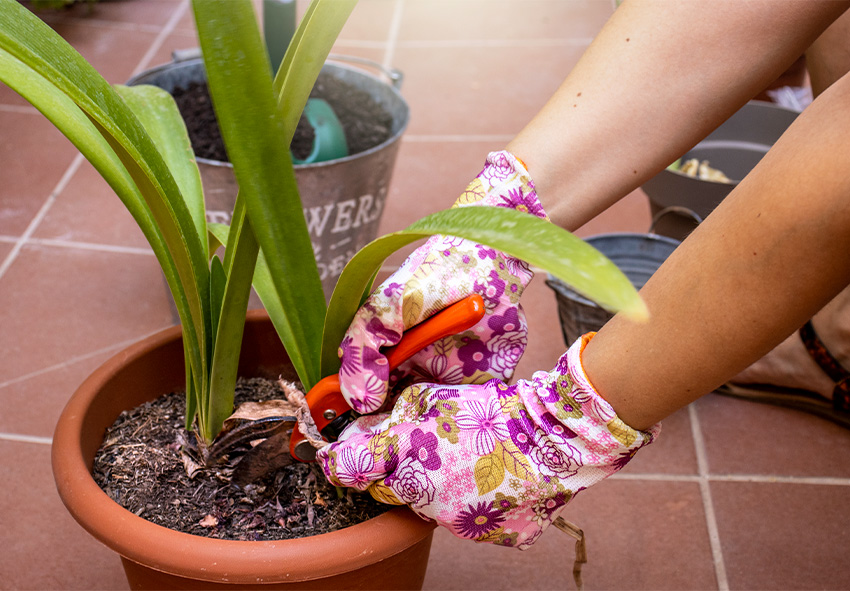
Propagating South African Amaryllis is an excellent way to multiply these beautiful blooms and enjoy vibrant flowers in more locations. There are two primary methods for propagating Amaryllis: dividing bulbs and growing from cuttings. Each method ensures you can expand your collection of these stunning flowers, ensuring you can enjoy their magnificent blooms year after year.
Both methods have their unique advantages. Dividing bulbs allows you to reproduce the plant’s exact characteristics, while cuttings offer a slightly different approach, allowing you to grow new plants from the original flowering stalk. Whether you’re a beginner or an experienced gardener, these methods can help you grow a thriving Amaryllis garden.
How to Propagate South African Amaryllis Step-by-Step
Propagating South African Amaryllis is a rewarding process that can be done in two main ways: dividing bulbs and growing from cuttings. Both methods are relatively easy but require proper timing and technique. Follow the steps below to successfully propagate your Amaryllis and enjoy a garden full of blooms.
Step 1: Dividing South African Amaryllis Bulbs
Dividing South African Amaryllis bulbs is one of the most effective ways to propagate them. This method allows you to multiply your plants while maintaining the original characteristics of the parent bulb. The best time to divide bulbs is after the plant has gone dormant, typically in the fall.
Begin by carefully lifting the bulb from the soil once the plant’s foliage has yellowed and died back. Gently separate the bulb into individual sections, ensuring that each piece has a healthy, firm bulb with roots and at least one “eye” or growth point. These “eyes” are critical for future growth.
Replant the divided bulbs in well-draining soil, keeping the top third of the bulb above the soil line to prevent rot. Space the bulbs about 8-10 inches apart to give them room to grow. Water lightly after planting and keep the soil moist but not soggy. In time, the divided bulbs will begin to establish themselves and produce beautiful blooms.
Step 2: Growing South African Amaryllis from Cuttings
Growing South African Amaryllis from cuttings is an alternative way to propagate this beautiful flower. Although not as commonly used as dividing bulbs, it’s a fascinating method that can yield great results. The key is to use a healthy flowering stem to grow a new plant.
To begin, cut a healthy flower stalk from the parent plant after the bloom has faded, ensuring the stalk is at least 6-8 inches long. Remove any excess leaves and place the stalk in a clean container filled with water. Let the cutting root in the water for several weeks, changing the water regularly to avoid stagnation.
Once roots have developed, plant the cutting in a small pot with well-draining soil. Keep the soil moist but not overly wet, and place the pot in a bright, warm location. The cutting should start to grow and eventually produce a new bulb, ready to be transplanted into the garden or larger container. This method may take some time, but with patience, you can enjoy a beautiful new Amaryllis plant.
Frequently Asked Questions (FAQs) about South African Amaryllis
1. Can South African Amaryllis be grown indoors?
Yes! South African Amaryllis thrives indoors if given bright, indirect sunlight for at least 6 hours daily. Place them near a south- or east-facing window for best results. Use a well-draining potting mix and a container with drainage holes. Water moderately when the top inch of soil dries out. After flowering, allow the foliage to grow and store energy for the next bloom cycle. Reduce watering in fall to encourage dormancy before the next flowering season.
2. How often should I water South African Amaryllis?
Water moderately during active growth in spring and summer, allowing the soil to dry slightly between waterings. Avoid overwatering, as the bulbs are prone to rot in soggy soil. In late summer and fall, reduce watering as the plant enters dormancy. If grown indoors, ensure the pot has proper drainage. For outdoor plants, well-draining soil is crucial. Resuming regular watering after dormancy will help trigger a new blooming cycle.
3. Can I order Holland South African Amaryllis from your online store?
Yes, you can! Our online store Dutch-bulbs.com offers a wide selection of South African Amaryllis, including different varieties and colors. We take pride in providing top-quality plants from Holland that are carefully cultivated and shipped with care to ensure they reach you in perfect condition.
4. How do I overwinter South African Amaryllis bulbs?
In mild climates (USDA Zones 8–10), South African Amaryllis can remain in the ground year-round. In colder climates, bulbs should be lifted and stored in fall. Once the leaves die back, dig up the bulbs, let them dry for a few days, and store them in a cool, dry place (50–60°F). If grown in pots, simply move the container indoors before the first frost. Resume watering and feeding in spring to encourage new growth.
5. Why isn’t my South African Amaryllis blooming?
If your Amaryllis isn’t blooming, it could be due to insufficient light, improper dormancy, or nutrient imbalances. Ensure the plant gets at least 6 hours of bright light daily. A proper dormant period (8–12 weeks of dry rest in a cool place) is crucial for triggering blooms. If the plant has plenty of leaves but no flowers, try a phosphorus-rich fertilizer to encourage flowering rather than foliage growth.
Published: 03.04.2025
